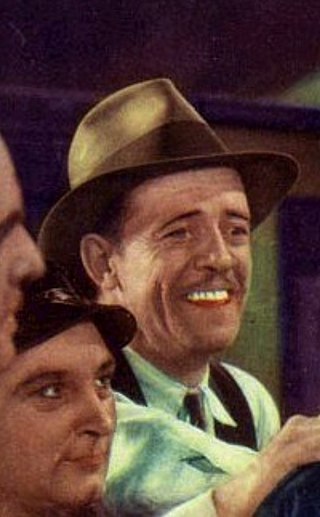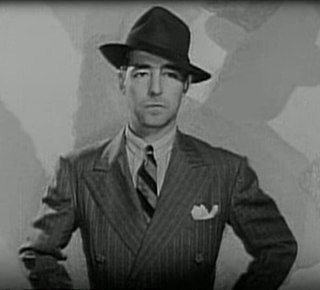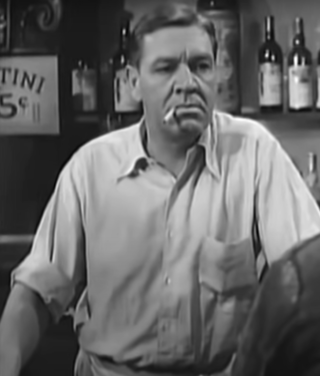
Council Bluffs is a city in and the county seat of Pottawattamie County, Iowa, United States. Its population was 62,799 as of the 2020 census, making it the state's tenth most populous city, and the most populous city in Southwest Iowa. The Omaha metropolitan region of which Council Bluffs is a part, is the 58th largest in the United States, with an estimated population of 967,604 (2020). It is located on the east bank of the Missouri River, across from Omaha, Nebraska. Until about 1853 Council Bluffs was known as Kanesville. Kanesville was the historic starting point of the Mormon Trail. Kanesville is also the northernmost anchor town of the other emigrant trails because there was a steam-powered boat which ferried the settlers' wagons and cattle across the Missouri River. In 1869, the first transcontinental railroad to California was connected to the existing U.S. rail network at Council Bluffs.

John Milton Chivington was a Methodist pastor and Mason who served as a colonel in the United States Volunteers during the New Mexico Campaign of the American Civil War. He led a rear action against a Confederate supply train in the Battle of Glorieta Pass, and was then appointed a colonel of cavalry during the Colorado War.

Red Cloud's War was an armed conflict between an alliance of the Lakota, Northern Cheyenne, and Northern Arapaho peoples against the United States and the Crow Nation that took place in the Wyoming and Montana territories from 1866 to 1868. The war was fought over control of the western Powder River Country in present north-central Wyoming.

Wardell Edwin Bond was an American film character actor who appeared in more than 200 films and starred in the NBC television series Wagon Train from 1957 to 1960. Among his best-remembered roles are Bert the cop in Frank Capra's It's a Wonderful Life (1946) and Captain Clayton in John Ford's The Searchers (1956). As a character actor, Bond frequently played cowboys, cops and soldiers.

George Glenn Strange was an American actor who appeared in hundreds of Western films. He played Sam Noonan, the bartender on CBS's Gunsmoke television series, and Frankenstein in three Universal films during the 1940s.

The California Trail was an emigrant trail of about 1,600 mi (2,600 km) across the western half of the North American continent from Missouri River towns to what is now the state of California. After it was established, the first half of the California Trail followed the same corridor of networked river valley trails as the Oregon Trail and the Mormon Trail, namely the valleys of the Platte, North Platte, and Sweetwater rivers to Wyoming. The trail has several splits and cutoffs for alternative routes around major landforms and to different destinations, with a combined length of over 5,000 mi (8,000 km).

Tom London was an American actor who played frequently in B-Westerns. According to The Guinness Book of Movie Records, London is credited with appearing in the most films in the history of Hollywood, according to the 2001 book Film Facts, which says that the performer who played in the most films was "Tom London, who made his first of over 2,000 appearances in The Great Train Robbery, 1903. He used his birth name in films until 1924.

Fort Kearny was a historic outpost of the United States Army founded in 1848 in the western U.S. during the middle and late 19th century. The fort was named after Col. and later General Stephen Watts Kearny. The outpost was located along the Oregon Trail near Kearney, Nebraska. The town of Kearney took its name from the fort. The "e" was added to Kearny by postmen who consistently misspelled the town name. A portion of the original site is preserved as Fort Kearny State Historical Park by the Nebraska Game and Parks Commission.

Henry George Carey Jr. was an American actor. He appeared in more than 90 films, including several John Ford Westerns, as well as numerous television series.

Kenne Duncan was a Canadian-born American B-movie character actor. Hyped professionally as "The Meanest Man in the Movies," the vast majority of his over 250 appearances on camera were Westerns, but he also did occasional forays into horror, crime drama, and science fiction. He also appeared in over a dozen serials.

Spotted Tail was a Sichangu Lakota tribal chief. Famed as a great warrior since his youth, warring on Ute, Pawnee and Absaroke (“Crow”), and having taken a leading part in the Grattan Massacre, he led his warriors in the Colorado and Platte River uprising after the massacre performed by John M. Chivington's Colorado Volunteers on the peaceful Cheyenne and Arapaho camping on Sand Creek, but declined to participate in Red Cloud's War.

Guinn Terrell Williams Jr. was an American actor who appeared in memorable westerns such as Dodge City (1939), Santa Fe Trail (1940), and The Comancheros (1961). He was nicknamed "Big Boy" as he was 6' 2" and had a muscular build from years of working on ranches and playing semi-pro and professional baseball, and at the height of his movie career was frequently billed above the title simply as Big Boy Williams or as "Big Boy" Guinn Williams on posters and in the film itself.

The Golden Boot Awards were an American acknowledgement of achievement honoring actors, actresses, and crew members who made significant contributions to the genre of Westerns in television and film. The award was sponsored and presented by the Motion Picture & Television Fund. Money raised at the award banquet was used to help finance various services offered by the Fund to those in the entertainment industry.

Reed Hadley was an American film, television and radio actor.

Harry Lewis Woods was an American film actor.

Hector William "Harry" Cording was an English-American actor. He is perhaps best remembered for his roles in the films The Black Cat (1934) and The Adventures of Robin Hood (1938).

The Great Platte River Road was a major overland travel corridor approximately following the course of the Platte River in present-day Nebraska and Wyoming that was shared by several popular emigrant trails during the 19th century, including the Trapper's Trail, the Oregon Trail, the Mormon Trail, the California Trail, the Pony Express route, and the military road connecting Fort Leavenworth and Fort Laramie. The road, which extended nearly 370 miles (600 km) from the Second Fort Kearny to Fort Laramie, was utilized primarily from 1841 to 1866. In modern times it is often regarded as a sort of superhighway of its era, and has been referred to as "the grand corridor of America's westward expansion".

Max Wagner was a Mexican-born American film actor who specialized in playing small parts such as thugs, gangsters, sailors, henchmen, bodyguards, cab drivers and moving men, appearing more than 400 films in his career, most without receiving screen credit. In 1927, he was a leading witness in the well-publicized manslaughter trials of actor Paul Kelly and actress/screenwriter Dorothy Mackaye.

The Montana Trail was a wagon road that served gold rush towns such as Bannack, Virginia City and later Helena during the Montana gold rush era of the 1860s and 1870s. Miners and settlers all traveled the trail to try to find better lives in Montana. The trail was also utilized for freighting and shipping supplies and food goods to Montana from Utah. American Indians, as well as the weather, were major risks to traveling on the Montana Trail.

The Ballad of Buster Scruggs is a 2018 American Western anthology film written, directed, produced, and edited by the Coen brothers. It stars Tim Blake Nelson, Tyne Daly, James Franco, Brendan Gleeson, Bill Heck, Grainger Hines, Zoe Kazan, Harry Melling, Liam Neeson, Jonjo O'Neill, Chelcie Ross, Saul Rubinek, and Tom Waits. It consists of six vignettes set on the American frontier.



















